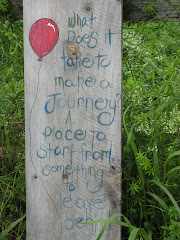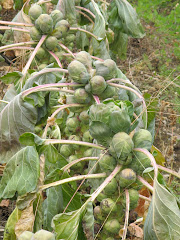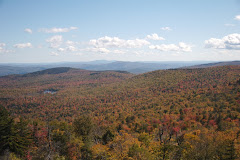 Maple buds.
Maple buds. White birch catkins and little leaves.
White birch catkins and little leaves.
 Beautiful blooms.
Beautiful blooms. Fennel and lettuce.
Fennel and lettuce. Just-watered bok choy.
Just-watered bok choy. Little peppers.
Little peppers.
 Summer squash.
Summer squash. Tomatoes.
Tomatoes. Baby cucumbers.
Baby cucumbers.
Apples. Sunlight on water. Pumpkin pie. Sweet potato soup. Fresh corn. Wood. Dirt. Honey. Wool hats. Hard rain. Onions cooked a long time. Old songs. Hands. Acorns. Maple syrup. Stone walls. Wind. Fresh tomato sauce. Well-loved cast iron skillets. Gingerbread. Freshly-tilled fields. Mountains. Paperbacks. Rocking chairs. Chickadees. Red-tailed hawks. Salt marsh hay. Bright kitchens. Black tea. Dark beer. Dawn. Bluefish. Working muscles. Rising bread. Sunflowers. Sweat. Endless everyday love.
 Trays lined up in the sun to dry.
Trays lined up in the sun to dry. Drying chives.
Drying chives. Beautiful chives!
Beautiful chives! Cleft graft, sealed with beeswax.
Cleft graft, sealed with beeswax. Poncho, about 20 minutes after we was born.
Poncho, about 20 minutes after we was born.
 Pie at the farm stand at 7 am - apple, raspberry, rhubarb, blueberry; tomato baseball in late August at Miriam Street; planting squash in early May in the late afternoon, the day a perfect spring blue; countless delicious potluck lunches of astounding variety; the classic farm lunch: tomato-basil-mozzarella sandwiches, made possible by the jugs of olive oil and balsamic at the stand, Erik's bread and cheese runs, and our own unbeatable tomatoes and basil; eating Aunt Ruby's tomatoes like apples in the fields; Sundays in late fall;
Pie at the farm stand at 7 am - apple, raspberry, rhubarb, blueberry; tomato baseball in late August at Miriam Street; planting squash in early May in the late afternoon, the day a perfect spring blue; countless delicious potluck lunches of astounding variety; the classic farm lunch: tomato-basil-mozzarella sandwiches, made possible by the jugs of olive oil and balsamic at the stand, Erik's bread and cheese runs, and our own unbeatable tomatoes and basil; eating Aunt Ruby's tomatoes like apples in the fields; Sundays in late fall;  teatime with Johanna, Emily and Eliza; taking down tomato stakes; harvesting potatoes (and making up silly songs about the gory of banana fingerlings); cleaning onions and garlic under sharp fall skies; spinach, mustard greens, and baby kale under tunnels of remay in late November; tractor lessons; the stand piled high with winter squash, onions, potatoes, and greens; high tomato season; washing kale veined with silver in cold water under high blue October skies; the familiar harvest board; massive July harvests of beans and peas and greens and beets and carrots, lettuce and arugula, radishes, turnips, and eggplant; taste-testing six varieties of corn every morning in August; afternoons alone in the back fields, hoeing onions, deadheading zinnias, hand weeding carrots;
teatime with Johanna, Emily and Eliza; taking down tomato stakes; harvesting potatoes (and making up silly songs about the gory of banana fingerlings); cleaning onions and garlic under sharp fall skies; spinach, mustard greens, and baby kale under tunnels of remay in late November; tractor lessons; the stand piled high with winter squash, onions, potatoes, and greens; high tomato season; washing kale veined with silver in cold water under high blue October skies; the familiar harvest board; massive July harvests of beans and peas and greens and beets and carrots, lettuce and arugula, radishes, turnips, and eggplant; taste-testing six varieties of corn every morning in August; afternoons alone in the back fields, hoeing onions, deadheading zinnias, hand weeding carrots;  the family of wild turkeys; two quarts of berries a day during strawberry season; sunlight on the torch sunflowers and dianthus in the front garden; knowing a place and being known by it.
the family of wild turkeys; two quarts of berries a day during strawberry season; sunlight on the torch sunflowers and dianthus in the front garden; knowing a place and being known by it.






 Our seed potatoes came. We won't be planting them for a few weeks, so for now they are living in the greenhouse. Soon they'll sprout, and then we'll cut them into pieces and put them in the ground.
Our seed potatoes came. We won't be planting them for a few weeks, so for now they are living in the greenhouse. Soon they'll sprout, and then we'll cut them into pieces and put them in the ground. Dill...and what looks like some Toscana kale. How did that get there?
Dill...and what looks like some Toscana kale. How did that get there? More potted herbs. This is one of my favorite tables in the greenhouse - about ten pots full of dill, cilantro, parsley, thyme and oregano, all of them studded with volunteer (or accidental) brassicas.
More potted herbs. This is one of my favorite tables in the greenhouse - about ten pots full of dill, cilantro, parsley, thyme and oregano, all of them studded with volunteer (or accidental) brassicas. Parsley and scallions.
Parsley and scallions. Napa cabbage and lettuce.
Napa cabbage and lettuce. Scallions and parsley again. The parsley looks so good I want to eat it right now, but I'll be patient and wait until it's of a more appropriate size.
Scallions and parsley again. The parsley looks so good I want to eat it right now, but I'll be patient and wait until it's of a more appropriate size.
 Perhaps the most indispensable tool on a farm (an impossible choice - a sharp pocket knife, the ubiquitous 5-gallon bucket, a pair of sturdy rubber boots, a screwdriver, vice-grips...how can you choose?), forks come in many shapes. This afternoon, before we returned to fixing the tongue on the chicken tractor, we sat in the sun with Olivier and talked about the various kinds.
Perhaps the most indispensable tool on a farm (an impossible choice - a sharp pocket knife, the ubiquitous 5-gallon bucket, a pair of sturdy rubber boots, a screwdriver, vice-grips...how can you choose?), forks come in many shapes. This afternoon, before we returned to fixing the tongue on the chicken tractor, we sat in the sun with Olivier and talked about the various kinds. The hay fork usually has only 3 (and sometimes 2) widely spaced tines. This makes it easy to hoist it into a pile of lose hay and gather up a large amount in one forkful. The hay balances on the tines; any more would create too much resistance, and the fork wouldn't easily slide into the pile and catch the hay.
The hay fork usually has only 3 (and sometimes 2) widely spaced tines. This makes it easy to hoist it into a pile of lose hay and gather up a large amount in one forkful. The hay balances on the tines; any more would create too much resistance, and the fork wouldn't easily slide into the pile and catch the hay. Then there are garden forks, which refer to any fork used to dig and turn soil. These forks are not for lifting. Their short, flat tines (usually 4) work like a shovel. Garden forks are the ideal tool for turning beds, incorporating compost, and digging holes.
Then there are garden forks, which refer to any fork used to dig and turn soil. These forks are not for lifting. Their short, flat tines (usually 4) work like a shovel. Garden forks are the ideal tool for turning beds, incorporating compost, and digging holes.
 where I find all seven of them curled up in the back corner every morning. We built the A-frame with two pieces of corrugated metal roofing, screwed to three pieces of wood (you can just see the bottom one poking out on the left.) The entire back wall can be unscrewed in one piece and the two sides separated, so we can move the pigs relatively easily.
where I find all seven of them curled up in the back corner every morning. We built the A-frame with two pieces of corrugated metal roofing, screwed to three pieces of wood (you can just see the bottom one poking out on the left.) The entire back wall can be unscrewed in one piece and the two sides separated, so we can move the pigs relatively easily. Pigs love rooting. They've only been in this enclosure a little more than a week, and they've already uprooted all the grass. We're using them to reclaim this area. it is very wet, and full of shrubs and brush. As the pigs move down the strip, tearing everything out, we'll be able to much better manage the (hopefully) field. Later in the summer, we're going to fence them into a big section of scrubby woods at the end of one of our big pastures. Having them in there will help clear up some of the debris. Farmers are using pigs, and their innate love of sticking their face in the dirt, in some pretty cool ways.
Pigs love rooting. They've only been in this enclosure a little more than a week, and they've already uprooted all the grass. We're using them to reclaim this area. it is very wet, and full of shrubs and brush. As the pigs move down the strip, tearing everything out, we'll be able to much better manage the (hopefully) field. Later in the summer, we're going to fence them into a big section of scrubby woods at the end of one of our big pastures. Having them in there will help clear up some of the debris. Farmers are using pigs, and their innate love of sticking their face in the dirt, in some pretty cool ways. Eating, of course, is a very serious business with pigs, and just about anything will do. Which is convient for us, because, sharing a house with ten other people, Tupperware of beans, roasted root vegetables, and leftover mac n' cheese inevitably get forgotten in the back of the fridge and are discovered weeks later covered in mold. Luckily, we live on a farm, where practically nothing is wasted. The pigs eat up every last kitchen scrap we toss at them, and next fall, the new students will be eating bacon for breakfast.
Eating, of course, is a very serious business with pigs, and just about anything will do. Which is convient for us, because, sharing a house with ten other people, Tupperware of beans, roasted root vegetables, and leftover mac n' cheese inevitably get forgotten in the back of the fridge and are discovered weeks later covered in mold. Luckily, we live on a farm, where practically nothing is wasted. The pigs eat up every last kitchen scrap we toss at them, and next fall, the new students will be eating bacon for breakfast. 




































































